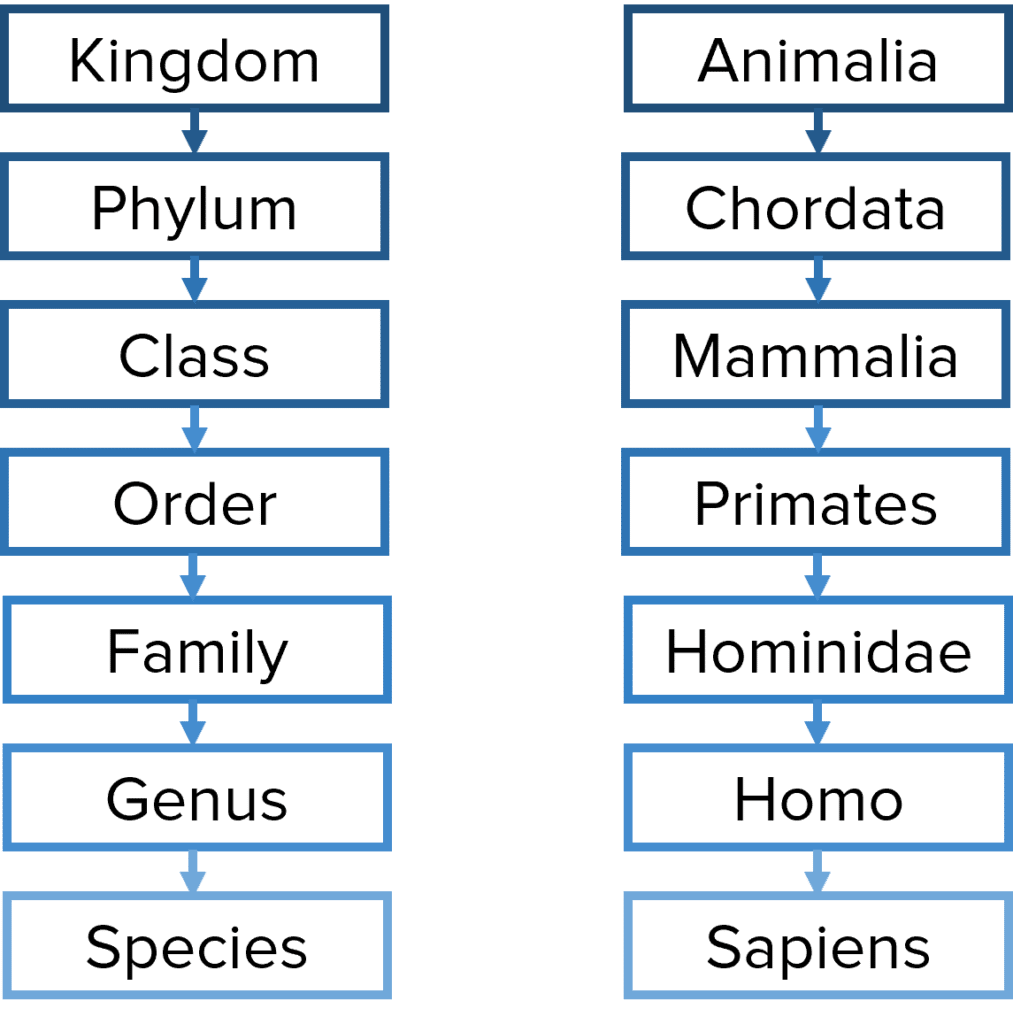Classifying Organisms
Classifying Organisms Revision
Classifying Organisms
Humans classify organisms based on their characteristics and structure. The system used splits organisms into smaller and smaller sub-sections, each one more specific than the last, until a binomial name is identified. Technological and biological developments have led to alterations to this method and the introduction of the three-domain system.
Classification

Humans first began to classify species based on their structure and characteristics.
Carl Linnaeus developed a tiered system to classify organisms. It begins by dividing all species into 5 kingdoms; animals, plants, fungi, protists and prokaryotes. Species are then divided into smaller and smaller sub-sections called phylum, class, order, family, genus and species. Each sub-section is more specific than the last.
Every species has a scientific name, called a binomial name, made up of its genus and species. It is always written in italics with the genus capitalised but not the species.
Example:
The image to the right shows how humans are classified.
The binomial name for humans is Homo sapiens.
Note:
It can be useful to create your own mnemonic to remember how organisms are classified.
Example:
Kingdom, Phylum, Class, Order, Family, Genus, Species can be remembered using:
Keep Pond Clean Or Frogs Get Sick.
Changes to Classification
Models of classification have changed over time due to advancements in technology and deeper understandings of biochemical processes, e.g. advancements in microscopes led to an improved understanding of the internal structures of certain organisms and led to alterations in how we classify certain species.
Carl Woese proposed a three-domain system in 1990 after advancements in chemical analysis techniques led him to discover that some species weren’t as closely related as we originally thought.
The three domains are:
- Archaea– prokaryotic cells that live in extreme conditions.
- Bacteria– true bacteria.
- Eukaryota– broad range of organisms including plants, animals, fungi and protists.
Arachaea and bacteria often look very similar but they have lots of biochemical differences.
These domains are then split into the original groups of kingdom, phylum, class, order, family, genus and species.
Evolutionary trees are a good way to represent evolutionary relationships between different species. Evolutionary trees are often created by comparing physical features, DNA analysis results and fossils from fossil records.
Classifying Organisms Example Questions
Question 1: List the sub-sections of the classification system in order.
[2 marks]
Kingdom, phylum, class, order, family, genus, species.
1 mark for correct names.
1 mark for the correct order.
Question 2: What is the correct binomial name for an African elephant?
- loxodonta africana
- Loxodonta africana
- Loxodonta africana
- Loxodonta Africana
[1 mark]
b. Loxodonta africana
Binomial names are written in italics with the first word (genus) capitalised only.
Question 3: What are the three domains, proposed by Carl Woese in 1990?
[1 mark]
Archaea, Bacteria and Eukaryota.






